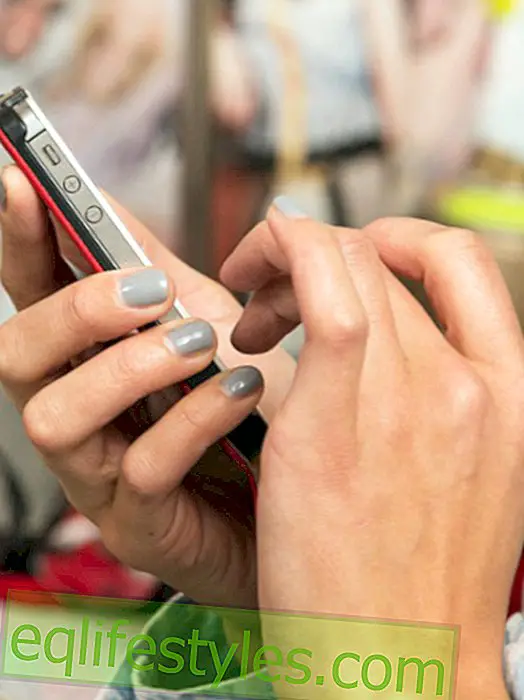Two headlights, a bumper - already the car looks like a face. This phenomenon of recognizing faces or figures in inanimate objects is called pareidolia. We'll tell you what it's all about.

Photo: Isabelle Dupuis / Wunderweib editor
- What is pareidolia?
- Why do we often have the impression that we are looking at things?
- Further examples for faces in objects
- Can pareidolia also be a sign of illness?
What is pareidolia?
The term "pareidolie" translated from ancient Greek means "illusion" or "false appearance" . It refers to a phenomenon in which people tend to recognize faces, figures or symbols in objects that are neither alive nor intentionally representing something living.
Pareidolia can run consciously - if we want to recognize faces in cars, houses, stains on the wall and the like and intentionally look for them. But sometimes we also see patterns in random phenomena without actively searching for them. This subform of the phenomenon is called "Apophany" .
Also interesting: Optical illusion: picture shows face from two perspectives
Why do we often get the impression that things are looking at us?
Do not worry, pareidolia is normal. It's simply in our nature that we try to recognize patterns when something looks familiar to us. For example, our brain thinks to identify a pair of eyes in two adjacent points or patches and completes it to a face:
I almost did not have the heart to drink my beer. But somehow it worked. @BrewDog #pareidolie pic.twitter.com/V9W8VCcQFc
- Matt Wagner (@Matt_Wagner) July 26, 2019
From an evolutionary point of view, our ability to interpret a complete picture with lightning fastness on the basis of certain indications is quite useful . Already for our ancestors, it was vital to be able to recognize dangers in time when hunting or gathering berries.
When they saw something in the bushes that looked like the eyes of a wild animal, they could cautiously retreat before the saber-toothed tiger or the cave bear caught them and mangled them.
But not only predators we have to spy early to survive. It is also important that we can quickly recognize and interpret human faces and their moods . Otherwise, our social life would be quite complicated. In addition, especially babies are dependent on recognizing people who are friendly to them right away.
Reading tip for parents: strengthening basic trust: This will make your child self-confident and strong for life
Other examples of faces in objects
On Twitter, Instagram and Co., many users enjoy making use of the hashtag #pareidolie to post images of "faces" and "figures" that they have seen in everyday life. For example, you do not want to provoke this chattering pepper on Instagram any further:
Check out this post on InstagramPareidolie: Ce phénomène consiste, par exemple, à identifier une forme familière dans un paysage, un nuage, de la fumée ou encore une dache d'encre. #bonyour # yoyovideo # bordeaux #locationbluray #locationdvd #lieuderencontre #machineacafe #liensocial # cinéma # videoclub # cinéphiles #passion # 1984 # quartierdugrandparc # 33 #gironde #nouvelleaquitaine #bordeauxmaville @yoyovideo @yoyo vidéo #bordeaux metropolis #jesuisbordelais #bonyour #pareidolie #collection #Instagram #france #french #instapicture #thingswithfaces #facehunter # decinéfilosparacinéfilos
A post shared by yoyo video (@ yoyo1er) on Aug 26, 2019 at 3:16 PDT
And this can not be anything but a friendly stone being, right?
On the topic #Pareidolie I have a nice example. Wishing you a nice weekend! pic.twitter.com/NCw9TPytzg
- Thomas Stegemann (@Datenschutz_TS) 16 August 2019
But sometimes it's the razor that looks a bit sleepy and obtuse :
The thing is staring at me! Friendly it does not work. But stupid. Yes, stupid. #pareidolia #clusterillusion pic.twitter.com/bHKJOFuitC
- Dr. Justice (@Drjustice) January 29, 2019
It does not always have to be human faces that we believe to recognize. Even a sweet dog in a puddle of water on the asphalt can appear through pareidolia:
@xSqueeZie # paréidolie ???????? pic.twitter.com/TYetCrzkj4
- Idris Mrabet (@IdrisMrabet) 13th September 2019
Good to know: Why is laughing healthy? What happens when laughing?
Can pareidolia also be a sign of illness?
Usually, pareidolia is not a disease symptom. In contrast, the sub-form of apophoria can be an indication of schizophrenia in extreme cases . Affected then see patterns, relationships and deeper meanings in purely random details and are convinced that this is the truth. More about this mental illness: Schizophrenia: symptoms of mental illness
These topics in the field of psychology are sure to interest you too:
- Boost self-esteem: simple tips for every situation
- Mental Health: 7 tips to do something good for your soul
- 10 bad habits that point to high intelligence









